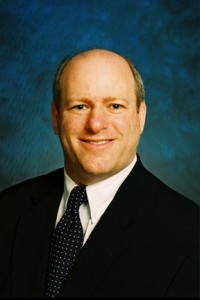 So far, incentive program for "meaningful use" of electronic health records has not required any mobile component, nor may it ever, but mobility is fast becoming a de facto necessity for achieving meaningful use in many clinical settings.
So far, incentive program for "meaningful use" of electronic health records has not required any mobile component, nor may it ever, but mobility is fast becoming a de facto necessity for achieving meaningful use in many clinical settings.
"I'm not sure how [physicians] do that without having access to [EHRs] wherever they are," Robert Oscar, CEO of RxEOB, a Richmond, Va., company that makes Web-based and mobile applications mostly to help consumers understand the pharmacy benefits of their health insurance, says in an interview with MobiHealthNews.
Doctors will use their mobile devices to view and update the EHRs in their practices as well as connect to the hospitals they practice at and admit patients to. "They're going to need mobile apps," Oscar says. "The concept that they're going to carry around a laptop or sit at a desk all the time just doesn't seem feasible to me."
As insurers and patients increasingly demand higher-quality care at lower cost, physicians will need data no matter where they are. Oscar says that it will be "critical" for practice management systems – not just EHRs – to be mobile, too.
"Smartphones and tablets are becoming the prevailing form of communication technology," Oscar says. Avoiding this trend is "just lunacy," he believes.
"I think hospitals will need this because it makes it easier for physicians." But a lot of work remains.
After a failed experiment viewing EHR data through the iPad's Web browser at Seattle Children's Hospital last year, Cerner released a native iPad app to facilitate read-only access to its clinical system. Without having any specific insider knowledge, Oscar believes this is an interim step for the later goal of allowing doctors to view and modify patient records on multimedia tablets.
Oscar notes that physicians are going to want to do everything on a single device no matter where they are, not carry different smart phones and tablets for different facilities. In other words, bring-your-own-device is here to stay. But BYOD really necessitates thin clients so data does not have to reside on mobile devices because healthcare organizations simply cannot afford to have breaches of patient-specific data.
Software design is going to have to change, though. Oscar says Web designers are taught to put the most important elements for the top and left of the screen because that's where people's eyes tend to gravitate toward when they're viewing a page on a traditional PC. Smartphone users, on the other hand, enter data with their thumbs, and people who are right-handed often will train their eyes on the right side of the screen, according to Oscar.
Also, because many people tend to have what Oscar calls "fat fingers," it's important to have adequate spacing between icons and other items on a touch-screen phone or tablet. "It's a very different environment than building portals," Oscar says.
But will physicians be able to tailor their mobile workflows to personal preferences? Oscar thinks so. "The technology will allow and enable different kinds of workflows that may be more convenient to physicians," he says. For example, tablets and smartphones can easily capture video and dictation, if doctors prefer those methods of documentation. However, data entry, because there is no mouse and keyboard, likely will include more drop-down menus than free-text fields.
Being the CEO of a company that offers consumer-facing products – though they're typically sold through health plans and pharmacy benefit managers – Oscar also is interested in how physicians connect to patients. He specifically mentioned telemedicine service and technology provider American Well as a good example. "Going forward, solutions like theirs will be part of the mix," he says.
For more on where mobile health intersects with meaningful use, watch this on-demand MobiHealthNews webinar.




















